By: Richard (Rick) Davis, Hannah Duke, Bob Collom
During this unprecedented and uncertain time, I find comfort in thinking about how our experiences on Earth translate into lessons we can apply to future Mars missions. Perhaps surprisingly, there are many ways in which the COVID-19 pandemic is preparing us for our journey to the Red Planet. Our experiences of isolation and adaptation to this new lifestyle are challenges that Mars astronauts must also master if they are to survive the first human mission to another planet. As we look toward pursuing a safer and healthier future, we can take note of lessons learned on how to sustain ourselves in our home world and apply them to the journey to our second planet. As you read this blog, feel free to tweet us @redplanetrick any lessons you’ve learned from COVID-19 that can apply to Mars missions. We will even update this blog as we get new ideas. Thank you!!
Where You Call Home
Our homes during this pandemic are our spaceships. They keep us safe from the dangers of the ongoing pandemic, just like the spacecraft that will protect Mars astronauts from the hazards of deep space travel. Despite keeping us safe, our homes can feel confining when we can’t go out to eat with friends or travel into work, school, or places like the gym. Astronauts on the International Space Station (ISS) can relate to what we’re going through, as they usually spend around six months confined to the station. Though the ISS is larger than a six-bedroom house, a lot of the habitable volume contains equipment and supplies, so space is limited. Mars astronauts will have a Mars Transfer Vehicle (MTV) to call home, and like most of us in our homes now, they will be confined to it for a long time. Specifically, the six to nine-month journey to the Red Planet, up to 500 days in the Martian system, and the six to nine-month return journey. So, it will be important for Mars astronauts to learn to manage living in a confined space for long periods just as we are now during the COVID-19 pandemic.
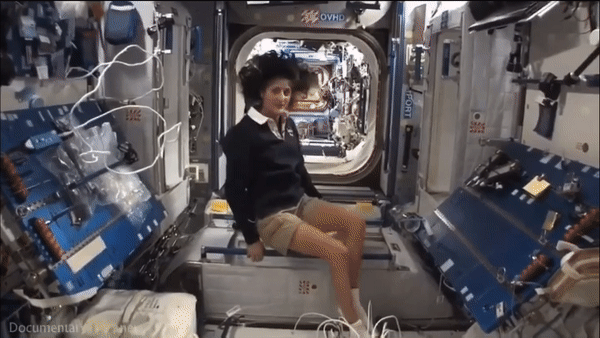
A big challenge for many during this pandemic is separating work life from home life. As we learn the best strategies for managing our time when stuck in the same place, we can maintain a healthier separation of work and rest. ISS astronauts, having been in similar situations to us now, share that they create boundaries on the station by sticking to a routine that allows them downtime, the ability to pace themselves in their work, and time for fun activities. Astronaut Scott Kelly admits that he misses the regimented routine on the ISS after returning to Earth. Mars explorers will need to use similar strategies to balance work and rest if they are to survive the long mission in a confined space.
Exercise can be a hard part of a routine to motivate – especially when sitting on the couch all day is an option. Astronauts embarking on deep space journeys probably won’t have a choice when it comes to exercise. ISS astronauts must exercise daily to mitigate the bone and muscle loss caused by living in microgravity. Since Mars astronauts will also need to keep their bones and muscles strong, they will likely exercise for around two hours a day like the ISS astronauts.
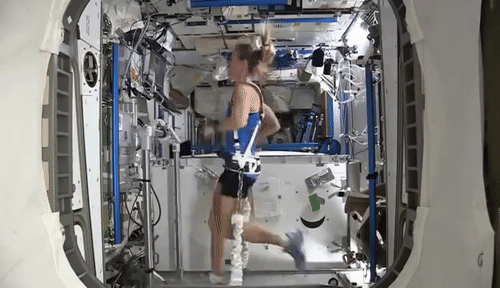
The self-discipline it takes for us to maintain routines, exercise habits, and a healthy separation between work and home life during the coronavirus pandemic is no small feat. As we learn from one another about the best ways to deal with being quarantined in our homes, we can take the same lessons and incorporate them into our plans to send humans to Mars.
Your Fellow Crew
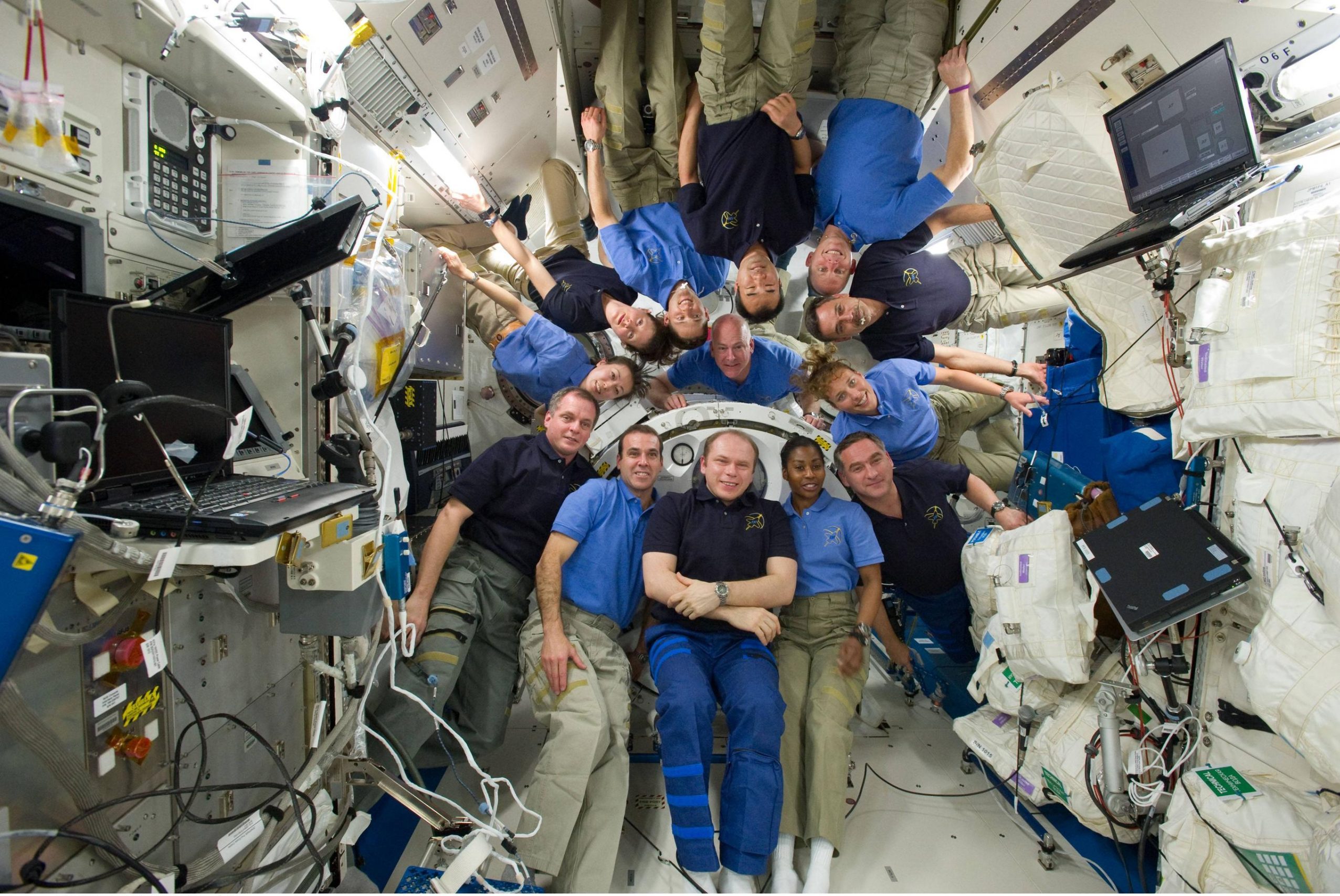
Just as some of us navigate living in quarantine with family/roommates around us, astronauts going to Mars will have to work closely with their crew members. Even if you usually get along with your “crew” at home, extended quarantine can be frustrating, so communication is key to getting along. Similarly, since Mars crews will experience isolation with each other for a long time, interpersonal and communication skills will be essential. On top of this, since the crew will likely be international, it will be crucial for everyone to work well in a multi-cultural environment.
Within our own homes, we are experiencing how living with one person versus, say, five people makes for a different quarantine experience. For Mars missions, a larger crew brings more knowledge and problem-solving abilities, but it requires more space and supplies, whereas not having enough people on the missions could result in deeper feelings of isolation or even depression. Getting the right crew size is critical.
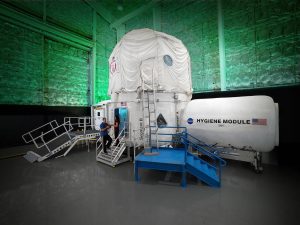
To learn about optimal crew sizes and how crews operate in potentially hostile, isolated environments, NASA conducts analog missions such as the NASA Extreme Environment Mission Operations (NEEMO), the Human Exploration Research Analog (HERA), and Desert Research and Technology Studies (RATS). These missions help teach us how to better pick the astronauts that we will send together on the around 1100-day isolated mission to Mars. There’s also the UAE’s exciting Mars Science City Project that will provide a large-scale analog of a permanent human presence on the Red Planet.

Even if you’re quarantining with a great “crew” during this pandemic, it’s still important to communicate with the friends and family you can’t see in person. We can apply what we’ve learned about staying connected during COVID-19 to help Mars astronauts also stay connected to family and friends back on Earth. The main difference is that since communication can only travel at the speed of light, Mars astronauts will experience some time delays in communications with Earth. Depending on the distance between Earth and Mars, the communication delay can reach up to 22 minutes one way, making it highly impractical for Mars astronauts to FaceTime with anyone millions of miles away on Earth. Thankfully, Mars astronauts will still be able to text, email, and send/view pre-recorded video messages.
Supplies & Suits
Most of us experienced great frustration when we went to the store and couldn’t find supplies like toilet paper, hand sanitizer, and other necessities. Then restaurants closed, limiting our food options. For Mars missions, food and supplies will be carefully planned out to last the around 1100-day mission, right down to what dessert options each astronaut prefers. Unfortunately, their food may lose flavor or even nutrients due to time or radiation exposure, so this will also require careful planning. Most of their food will likely be pre-packaged and stored in a way that minimizes volume, and since the cost of launching food and supplies is high, they won’t have the luxury of being wasteful. Having limited supplies is challenging and can be frustrating, but as we learned during the early months of this pandemic, careful rationing and planning helps us live with limited options.
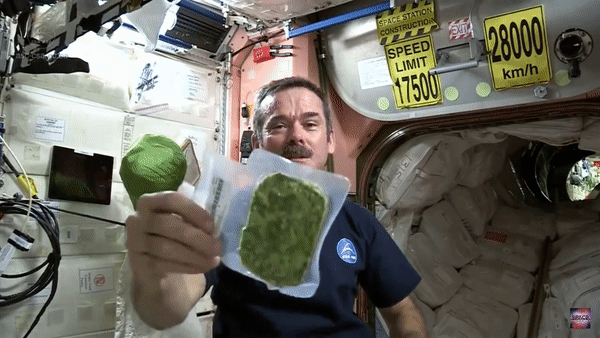
Another adjustment to our lives is wearing a mask out in public. Mars astronauts will also need to adapt their wardrobe. When exploring the surface of Mars, astronauts will wear pressurized, temperature-controlled suits that provide oxygen and remove exhaled CO2. Going outside without one is not an option in the low-pressure, CO2-rich Martian atmosphere. The suits must also be dust-proof as it’s important to protect the astronauts’ lungs from inhaling Martian dust. From face masks to surface exploration suits, it’s critical to protect ourselves when venturing out into potentially hazardous environments.
On to Mars

There’s one last major commonality between our lives during COVID-19 and space exploration: both serve a greater purpose for humanity. Every day that we practice social distancing and stay home, we save lives. That thought makes it easier to tackle the challenges that come with living differently than we’re used to. Similarly, Mars explorers will take pride in knowing that they are progressing humanity’s knowledge and propelling us into a new age of space exploration.
So many brave medical workers are helping humanity by fighting COVID-19 on the front lines. Astronauts on the first mission to Mars will be on the front lines of space exploration, and it will take similar amounts of bravery to face such a feat. Though most of us aren’t on the front lines of COVID-19 or Mars exploration, we are still helping humanity achieve a healthier, smarter, and more adventurous future. Getting to Mars is a collective human effort, as is defeating COVID-19.
When astronauts embark on the long journey to Mars, know that you’ve already mastered some experiences similar to what they’ll live through. We’re preparing for a new era of adventure, and I hope you’re inspired by the thought that our experiences and skills gained during COVID-19 are not as far from the future of space exploration as they may seem. Consider viewing your new lifestyle and its obstacles as challenges to triumph. Take the mindset of a Mars astronaut and face this unprecedented time with courage and determination to problem-solve your way to the end. This is a difficult time for all of us, but together we will overcome this pandemic, just as together, we will get humans to Mars in the next era of space exploration.
